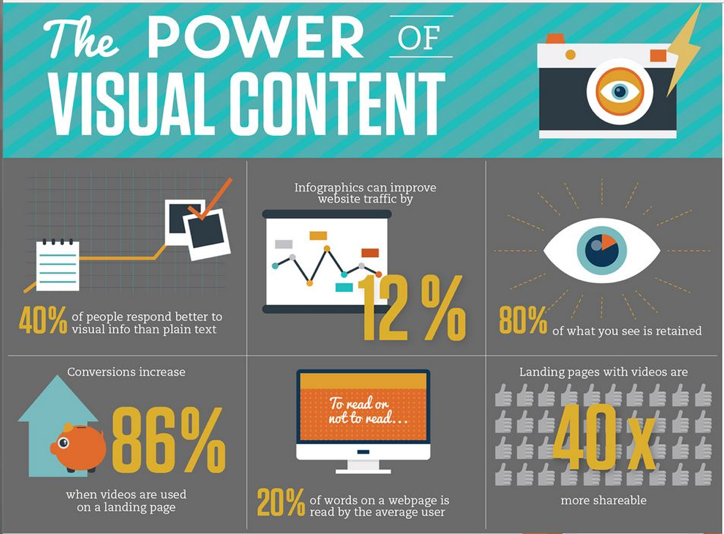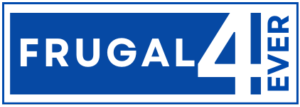Imagine a world overwhelmed with information. It's not hard, is it? Because that's the reality of the digital age we live in. Over 7,000 tweets are sent out daily each second, numerous blog posts are published, and countless videos are uploaded. In this vast sea of content, what truly makes a difference? Quality.

The importance of quality content in today's digital realm cannot be overstated. It's the bridge that connects brands to their audiences, turning passive readers into active participants. According to HubSpot's marketing statistics, 70% of marketers are actively investing in content marketing. But why? High-quality content has the power to drive traffic, increase engagement, and build trust.
But what does ‘quality content' really mean? How can one differentiate between a hastily put-together blog post and a well-researched article? This guide aims to unravel the secrets behind crafting engaging blog posts that captivate readers and stand the test of time. We'll dive deep into the mechanics of good writing, the art of storytelling in blogging, the significance of research, and much more. So, whether you're a budding blogger or an established content creator looking to refine your craft, this guide promises insights and techniques to elevate your content game.
The Fundamentals of Great Writing
Every writer, be it a seasoned journalist or a novice blogger, rests their content on certain foundational pillars. Mastering these fundamentals is the key to producing content that reads well and resonates with its audience. Let's unpack these essentials.
Audience Analysis: Understanding Who You're Writing For
Before you pen the first word, knowing who you're writing for is crucial. Different audiences have varying preferences, language nuances, and pain points. For instance, content for millennials might be more casual and peppered with pop culture references, while professionals in a niche field might appreciate more industry-specific jargon and detailed insights. By tailoring your content to your audience's tastes and needs, you ensure your message doesn't just reach them—it speaks to them.
Tone and Voice: The Difference and Why They Matter
Your writing's ‘voice' is its distinct personality, style, or point of view. Think of it as a consistent character that shines through in all your pieces. The ‘tone', on the other hand, is the mood or emotional quality of your writing. While your voice remains consistent, the tone can shift depending on the topic or audience. For example, a post on a serious topic like cybersecurity might have a more formal tone, while a piece on the latest summer trends could be light and breezy.
Grammar and Syntax: The Non-negotiables of Clear Writing
Poor grammar can be a deal-breaker, no matter how profound your insights or how compelling your narratives are. It disrupts the reading flow and can sometimes even alter the meaning of a sentence. Thankfully, in this digital age, numerous tools like Grammarly can help ensure your writing is grammatically sound. However, relying solely on tools isn't enough. Regularly brushing up on grammar rules and reading widely can go a long way in refining your writing style.
Crafting the Perfect Headline
The headline is often the first thing people see, and it can make or break their decision to click on your content. In essence, it's the gateway to your masterpiece. But how do you craft a headline that's both catchy and relevant?
Why Headlines Matter: The Stats Behind Reader Engagement
According to Copyblogger, on average, 8 out of 10 people will read your headline, but only 2 out of 10 will proceed to read the rest of your content. This statistic alone emphasizes the immense weight a headline carries. A compelling headline doesn't just capture attention—it piques curiosity and promises value, encouraging the reader to delve deeper into the article.
According to Moz's research; simple and direct headings are best.

Techniques to Create Clickable Headlines
Creating an enticing headline is both an art and a science. Here are a few proven strategies:
- Use Numbers: Lists like “7 Ways to Improve Your Writing” often perform well because they promise actionable, organized content.
- Ask a Question: Questions engage readers and prompt them to seek answers within your post.
- Be Clear and Direct: Avoid jargon and ensure your headline directly conveys the topic or benefit of your content.
- Utilize Emotional Triggers: Words that evoke emotion, like “surprising” or “powerful,” can make headlines more captivating.
Tools and Platforms for Headline Analysis
Thankfully, you don't have to rely solely on intuition. Several tools can provide feedback on your headlines:
- CoSchedule Headline Analyzer: Offers a detailed breakdown of your headline's structure, grammar, and readability.
- Sharethrough Headline Analyzer: Measures the headline's engagement and impression scores.
Structuring Your Blog Post for Optimal Reader Engagement
While the meat of your content is essential, the way you structure and present it is equally critical. A well-structured post ensures that your readers stick around and enhances their understanding and take away from the piece.
The Science Behind Structured Writing
Why are certain blog posts easier to read and comprehend than others? Structure plays a significant role. According to a study by the Nielsen Norman Group, a clear and logical content structure can improve user engagement by up to 47%. By guiding the reader through a coherent flow, you make the information consumption process smoother and more enjoyable.
Key Components of a Structured Post
A winning blog post usually contains these foundational components:
- Introduction: Sets the stage by introducing the topic and its relevance.
- Subheadings: Break up the content, making it more digestible and allowing readers to skim for relevant sections.
- Short Paragraphs: Make reading on screens, especially mobile devices, much easier.
- Bullet Points and Lists: Offer clear, concise points and are particularly effective for summarizing information.
- Images and Visuals: Break up the text and add depth and context to your content.
- Conclusion: Summarizes key points and often includes a call-to-action, guiding readers on the next steps.
Enhancing Engagement with Design and Visual Elements
The aesthetics of your post play a significant role in keeping your readers engaged. Employing elements like infographics, relevant images, and even videos can amplify the impact of your content. According to HubSpot, articles with images get 94% more views than those without. The key is to ensure these visuals are relevant, high-quality, and appropriately placed within the post.
The Art of Storytelling in Blogging
Storytelling isn't just for novelists and filmmakers. In the world of blogging, weaving a story can transform a standard post into a captivating narrative. Stories resonate with readers on a profound level, establishing a deeper connection and making the content memorable.
Why Stories Matter in Blogging
Our brains are hardwired for stories. They've been a part of human culture for millennia and used to pass down traditions, values, and knowledge. According to Psychology Today, when we read or hear stories, not only do the language-processing parts of our brain light up but so do the areas that would be engaged if we were experiencing the events first-hand. This immersive quality is what makes storytelling a powerful tool in blogging.
Incorporating Stories into Your Blog Posts
Every story has a beginning, middle, and end. When translating this to blogging, consider the following steps:
- Set the Scene: Introduce the characters or setting. This could be you, a client, or a fictional person relevant to your topic.
- Present the Challenge: This could be a problem you faced, a common issue in your industry, or a hurdle your reader might encounter.
- Offer a Resolution: Share the solution, the lessons learned, or the takeaways that readers can apply in their own lives.
Examples of Effective Storytelling in Blogging
Many bloggers have masterfully incorporated storytelling into their content. For instance, travel bloggers often narrate their personal adventures, the challenges they faced, and the beauty they encountered. Similarly, personal finance bloggers might share their journey from debt to financial freedom, creating an informative and deeply personal narrative.
Engaging Your Audience with Actionable Content
In the vast sea of content available online, what truly stands out is content that doesn't just provide information, but offers actionable steps for readers. Actionable content empowers readers, giving them a clear roadmap to apply what they've learned, leading to tangible outcomes.
The Power of Actionable Content
Information is valuable, but it can sometimes feel overwhelming or even pointless without a clear path to action. According to a study by the Content Marketing Institute, content that includes actionable takeaways tends to have a 47% higher engagement rate than content without. This kind of engagement is a win-win, offering readers valuable insights and giving them the tools to implement these insights in real-life scenarios.
Crafting Content that Drives Action
So, how do you transform your blog post from a passive read to an active guide? Here are some pointers:
- Use Clear and Direct Language: Avoid jargon. Speak directly to the reader, guiding them through each step.
- Break It Down: Chunk your content. Lists, bullet points, and numbered steps can make a process more digestible and straightforward.
- Provide Examples: Show readers how to apply advice by offering real-world examples or case studies.
- Encourage Feedback: Ask readers to share their experiences, challenges, or success stories. It fosters community and continuous learning.
The Ripple Effect of Actionable Content
When your readers act on your content, the effects ripple out. They might share their successes with their network, bringing new readers to your blog. They might even become advocates for your brand, trusting your content to provide value every time. This trust and engagement lay the foundation for a loyal readership and more extended community reach.
Optimizing Content for Search Engines and Readers
The art of blogging isn't just about producing great content; it's also about ensuring that content reaches the right eyes. How do you strike the balance between creating content that's both search-engine-friendly and reader-centric? Let's explore this vital aspect of content creation.
Finding the Sweet Spot: SEO meets User Experience
While SEO helps increase your content's visibility on search engines, user experience ensures that readers stay engaged. The key is to find the sweet spot where both align. For instance, a well-structured blog post with headers, bullet points, and short paragraphs appeals to readers and ranks well in search engines because of its readability.
Balancing SEO and Readability

Here are some effective techniques:
- Keyword Integration: Naturally integrate keywords into your content. Remember, it should sound conversational and not forced.
- Use of Headers: Breaking content into sections with descriptive headers not only aids skim readers but also helps with SEO.
- Engaging Meta Descriptions: While meta descriptions play a role in SEO, ensure they're also enticing for potential readers.
- Optimized Images: Ensure images have relevant alt tags and are compressed for faster loading times. This aids both SEO and user experience.
Editing and Proofreading: The Final Frontier
Have you ever heard the saying, “Writing is rewriting”? In the world of content creation, those words ring truer than ever. No matter how good your first draft is, refining your work through editing and proofreading is what sets professional content apart. Let's delve into the significance of this final, critical step in the content creation process.
Taking a Step Back: The Magic of Fresh Eyes
Once you've poured your thoughts into a blog post, hitting publish is tempting. Resist that urge. Taking a break and revisiting your content allows you to spot inconsistencies, redundancies, and areas that can be improved. You return with a renewed perspective by distancing yourself momentarily, catching errors you might've previously overlooked.
Your Digital Companions: Tools for Editing and Grammar Checks
Thankfully, writers aren't alone in their quest for polished content. There's a plethora of digital tools designed to help. Platforms like Grammarly and Hemingway App can assist in identifying grammatical errors, enhancing readability, and refining your writing style. While these tools are invaluable, remember they're supplementary; always trust your instincts and voice.
More Eyes, Fewer Errors: The Importance of Peer Reviews
Another set of eyes can work wonders. Having peers, friends, or fellow writers review your content can unearth insights and feedback that might've eluded you. They can provide fresh perspectives, suggest structural changes, or even spot that occasional typo you missed. Think of peer reviews as a safety net, ensuring your content is the best version of itself before going live.
The Role of Visuals in Enhancing Content

We live in an era where visuals play a pivotal role in storytelling. With the rise of social media and shortened attention spans, the adage “a picture is worth a thousand words” has never been more relevant. But just how crucial are visuals for your content? Let's dive deep and uncover the impact.
More Than Just Eye-Candy: Stats on Reader Engagement with Visual Content
Visual content isn't just appealing; it's effective. According to HubSpot, content with relevant images receives 94% more views than content without. Furthermore, readers can recall 65% of the information they see in visuals even after three days, as opposed to only 10% for text-only content. These statistics underscore the sheer power of incorporating visuals into your content strategy.
Painting the Canvas: Types of Visuals
From captivating images to compelling videos, the range of visuals available is vast and varied. Here's a quick breakdown:
- Infographics: Perfect for representing data in an engaging manner.
- Images: Ideal for breaking up text and adding context.
- Videos: Great for tutorials, interviews, or storytelling.
- Charts and Graphs: Best for depicting trends and stats.
- GIFs: Effective in adding humor or illustrating short processes.
Forge Your Masterpiece: Platforms and Tools for Creating Visuals
While not everyone is a professional designer, today's digital landscape offers a plethora of tools to help craft stunning visuals. Platforms like Canva and Adobe Spark make designing infographics, images and even videos a breeze. With easy-to-use interfaces and vast template libraries, you're equipped to elevate your content with high-quality visuals, with no design degree required.
Conclusion
In today's fast-paced digital realm, where countless articles and posts jostle for attention, what truly leaves a mark is content that resonates, informs, and engages.
But let's be clear: chasing after quantity – producing article after article without genuine insight or value – is a race with no real winners. The internet may be vast, but the spotlight shines brightest on meticulously crafted, researched, and presented content. As a content creator, your primary aim should always be to add value, to enlighten, and to engage.
So, whether you're just starting out or have been in the content game for a while, always remember: it's not about how much you write, but how well you write it.










